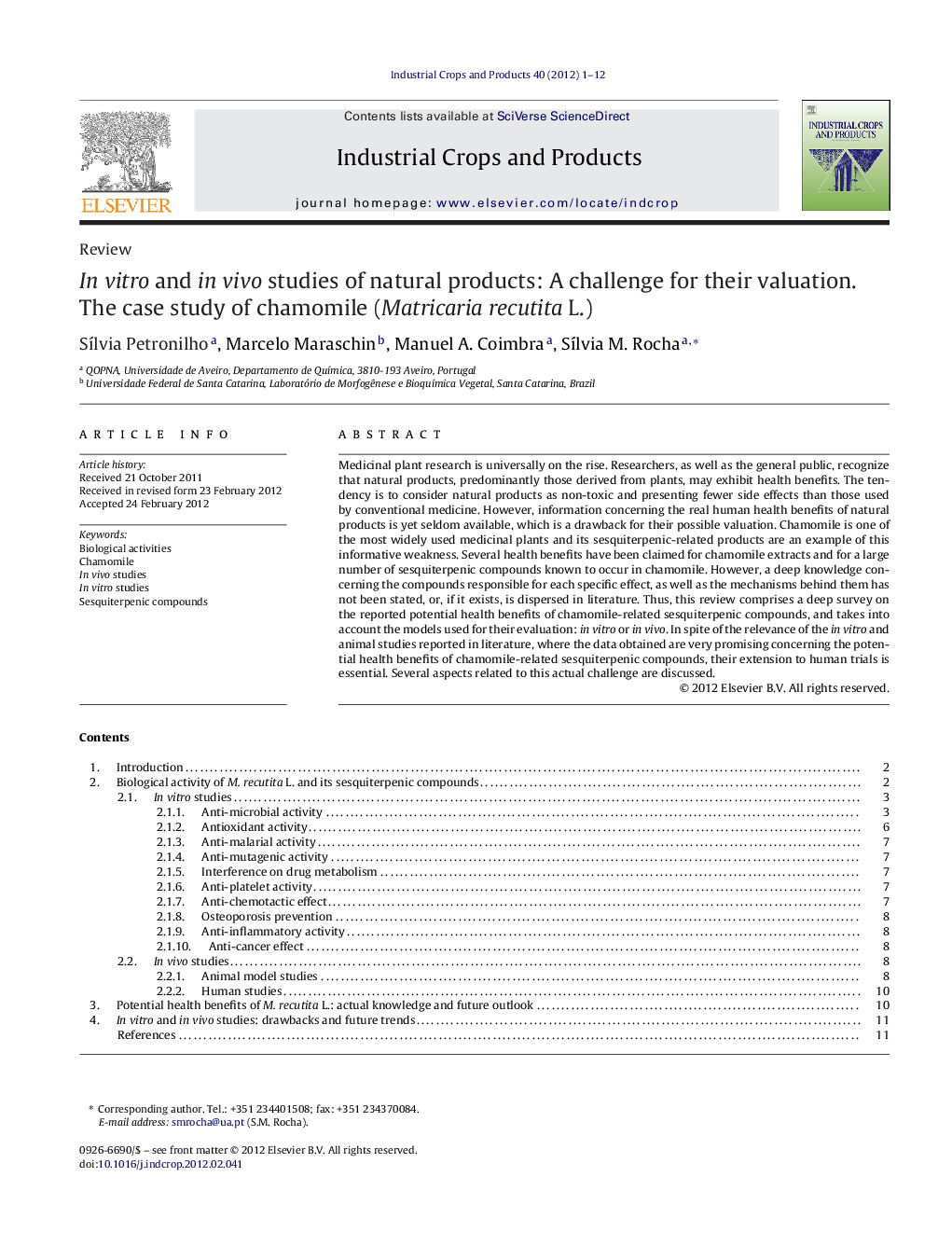| Article ID | Journal | Published Year | Pages | File Type |
|---|---|---|---|---|
| 4513952 | Industrial Crops and Products | 2012 | 12 Pages |
Medicinal plant research is universally on the rise. Researchers, as well as the general public, recognize that natural products, predominantly those derived from plants, may exhibit health benefits. The tendency is to consider natural products as non-toxic and presenting fewer side effects than those used by conventional medicine. However, information concerning the real human health benefits of natural products is yet seldom available, which is a drawback for their possible valuation. Chamomile is one of the most widely used medicinal plants and its sesquiterpenic-related products are an example of this informative weakness. Several health benefits have been claimed for chamomile extracts and for a large number of sesquiterpenic compounds known to occur in chamomile. However, a deep knowledge concerning the compounds responsible for each specific effect, as well as the mechanisms behind them has not been stated, or, if it exists, is dispersed in literature. Thus, this review comprises a deep survey on the reported potential health benefits of chamomile-related sesquiterpenic compounds, and takes into account the models used for their evaluation: in vitro or in vivo. In spite of the relevance of the in vitro and animal studies reported in literature, where the data obtained are very promising concerning the potential health benefits of chamomile-related sesquiterpenic compounds, their extension to human trials is essential. Several aspects related to this actual challenge are discussed.
► Scarce information on real human health benefits of natural products is available. ► Several health benefits have been reported for chamomile extracts and M. recutita L. ► The models used to evaluate the biological activities were classified: in vitro and in vivo. ► In vitro and animal studies are very promising, however their extension to human trials is essential. ► Chamomile-related sesquiterpenic compounds seem to be involved in a network of biological effects.
